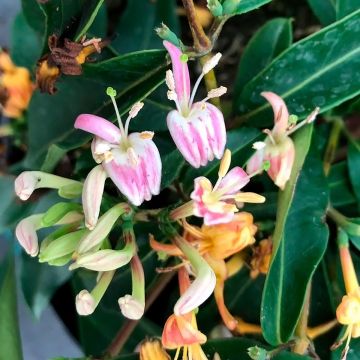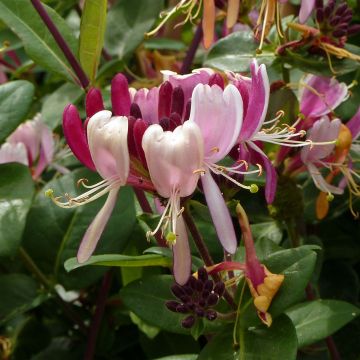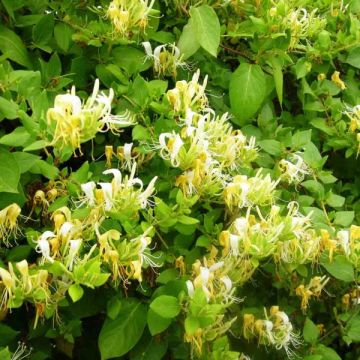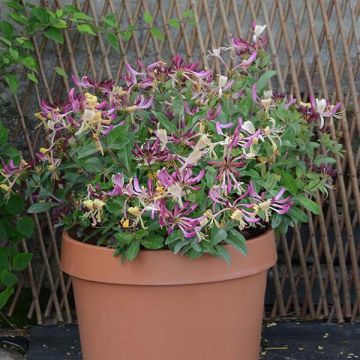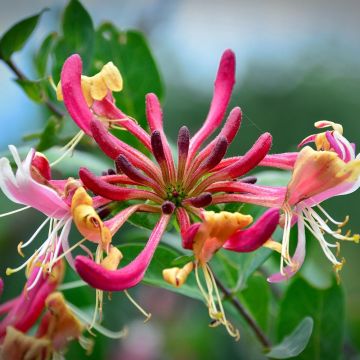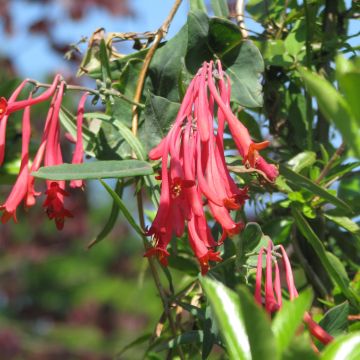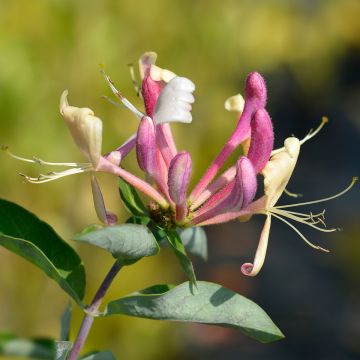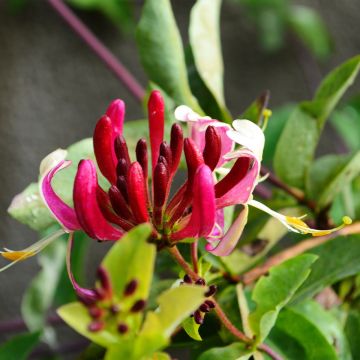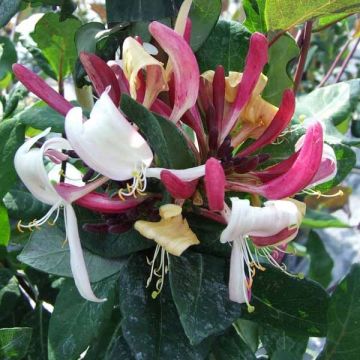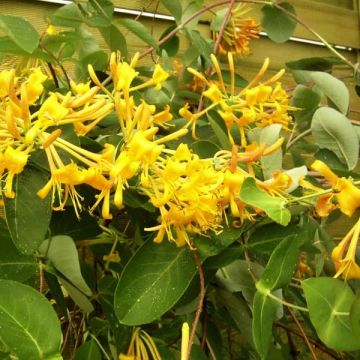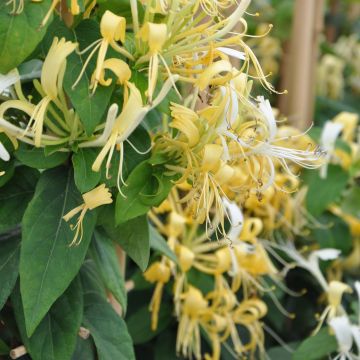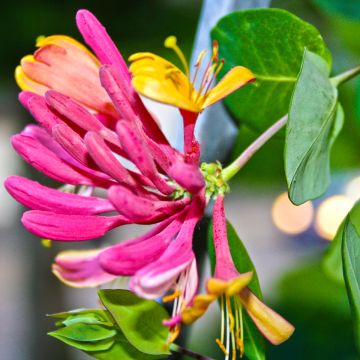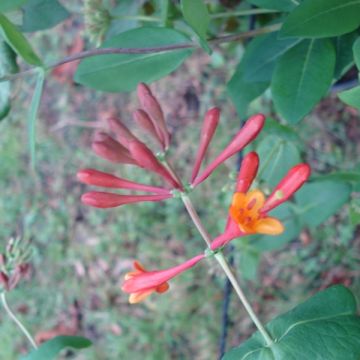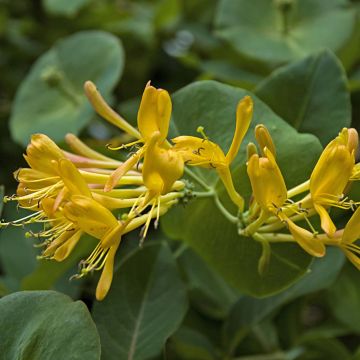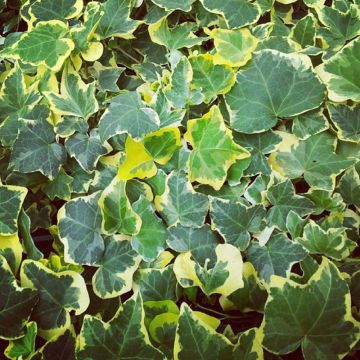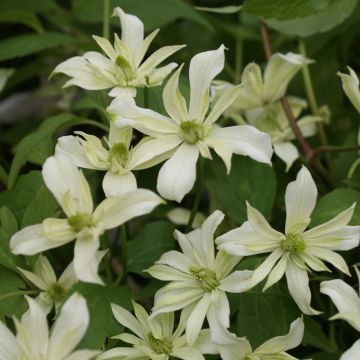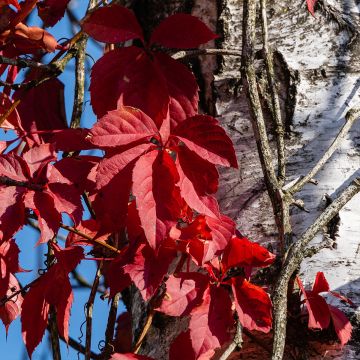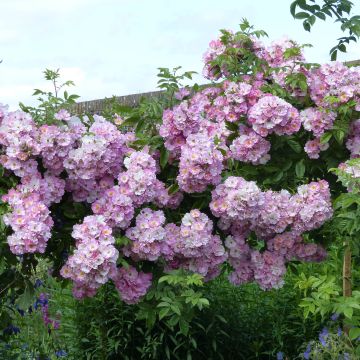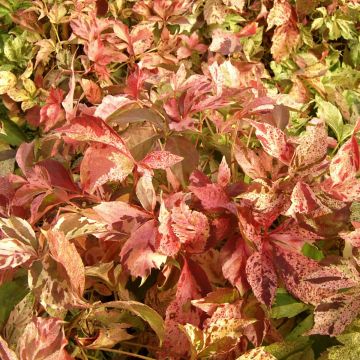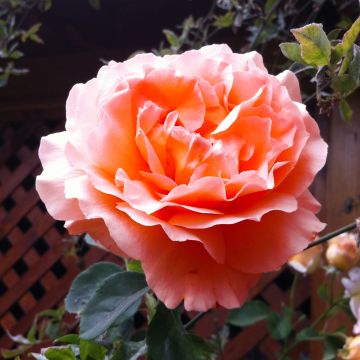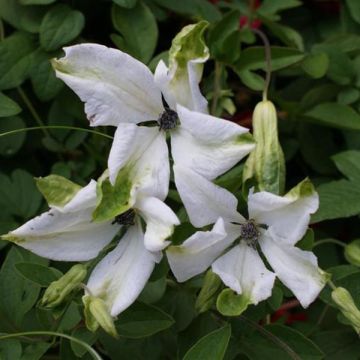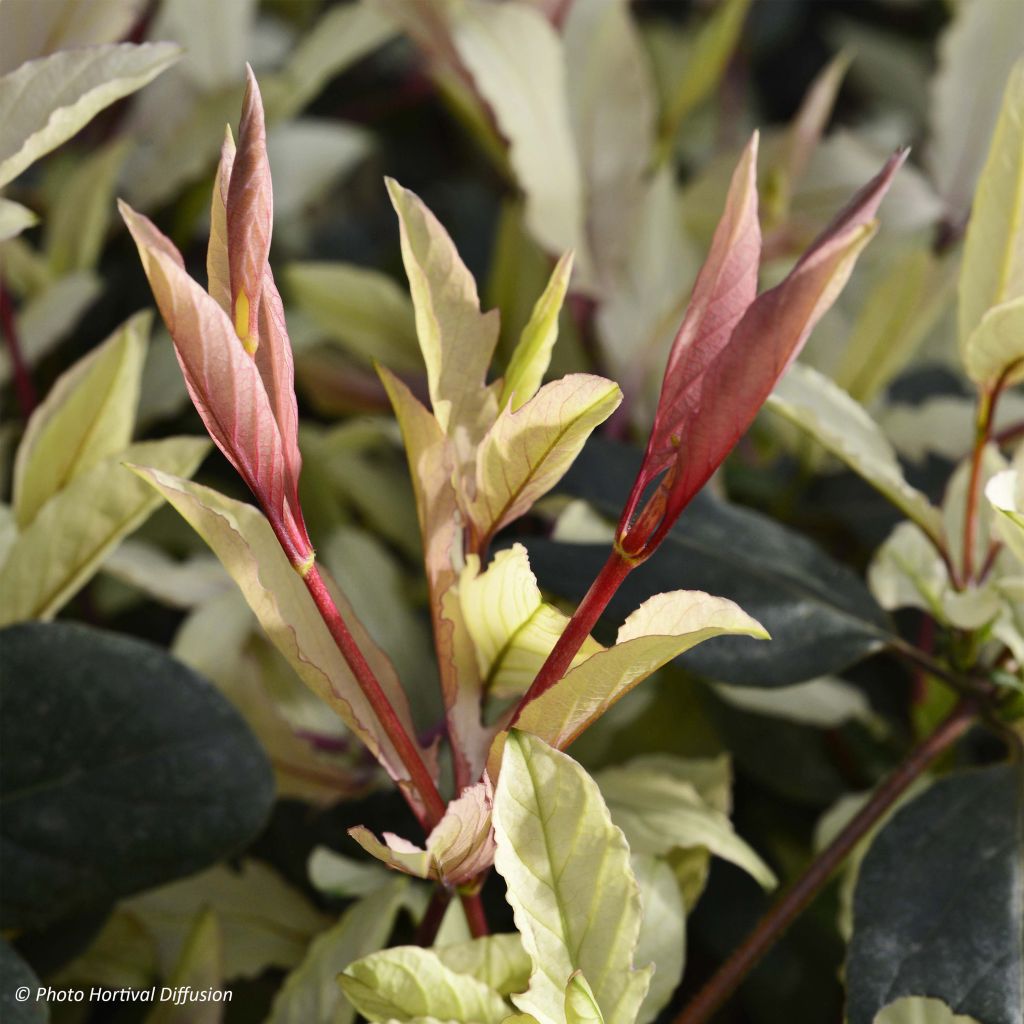

Lonicera japonica Pink Aperitif - Chèvrefeuille du Japon
Lonicera japonica Pink Aperitif - Japanese Honeysuckle
Lonicera japonica Pink Aperitif
Japanese Honeysuckle, Golden-and-silver Honeysuckle, Chinese Honeysuckle
Remarkable honeysuckle for its spring foliage. Beautiful shrimp pink branches!! The blooming is not visible from afar as the flowers are small, but they smell divine.
Corinne, 23/07/2020
Special offer!
Receive a €20 voucher for any order over €90 (excluding delivery costs, credit notes, and plastic-free options)!
1- Add your favorite plants to your cart.
2- Once you have reached €90, confirm your order (you can even choose the delivery date!).
3- As soon as your order is shipped, you will receive an email containing your voucher code, valid for 3 months (90 days).
Your voucher is unique and can only be used once, for any order with a minimum value of €20, excluding delivery costs.
Can be combined with other current offers, non-divisible and non-refundable.
Why not try an alternative variety in stock?
View all →This plant carries a 6 months recovery warranty
More information
We guarantee the quality of our plants for a full growing cycle, and will replace at our expense any plant that fails to recover under normal climatic and planting conditions.

Would this plant suit my garden?
Set up your Plantfit profile →
Description
The Lonicera japonica 'Pink Aperitif' is a new variety of Japanese honeysuckle that dresses up for a party most of the year. This climbing plant, as beautiful as it is eccentric and fragrant, is adorned in spring with young shoots tinged with cream and shrimp pink, in summer with green leaves animated by young red-bronze shoots that echo the beautiful bicolour cream and red flowers, divinely scented. Like clematis, this climbing plant wraps itself around trees and nearby bushes and requires little maintenance: it thrives with its head in the non-burning sun and its feet in the shade in a relatively moist, ordinary soil.
Japanese honeysuckle is a more or less evergreen woody climbing plant of the Caprifoliaceae family, native to East Asia. This plant shows vigorous growth in nature that is best suited for slightly wild, open spaces.
The 'Pink Aperitif' variety, recently obtained in the United Kingdom by Tim Crowther, stands out with its reduced growth and remarkably coloured vegetation. At maturity, this fast-growing honeysuckle will reach approximately 4m (13ft) in height and 3m (10ft) in width. Its long stems wrap around any support it encounters but can also crawl and form a ground cover. They bear single, ovate leaves arranged opposite each other. The spring shoots are a vivid pink, developing leaves that change from shrimp pink to cream-white, then become green at maturity. The summer growth is also highly coloured, this time in red-copper bronze. From June onwards, many 3cm (1in) tubular flowers appear and continue blooming until the end of summer. Divided into two lips, they display prominent stamens and a bicolour red and cream hue. This penetratingly scented flowering attracts numerous pollinating insects. It is followed by the formation of tiny, fleshy, black-purple berries that are not edible but greatly appreciated by birds.
This striking 'Pink Aperitif' honeysuckle can be planted in the ground, away from harsh sun, with shaded feet. It is naturally perfect for covering anything that needs hiding: fences, wire mesh or sheds, as long as it has a support to cling to. It is less known for its ability to climb narrow supports, turning even the most miniature pole into a vegetated column. It can also spread across the ground in a slightly wild area of the garden. It forms a beautiful combination with clematis. It also has its place in a hedge alongside flowering shrubs such as lilacs, mock oranges, deutzias or even ceanothus. The evergreen foliage under a moderate to mild climate allows you to camouflage a wall or fence, even in winter.
Report an error about the product description
Lonicera japonica Pink Aperitif - Japanese Honeysuckle in pictures
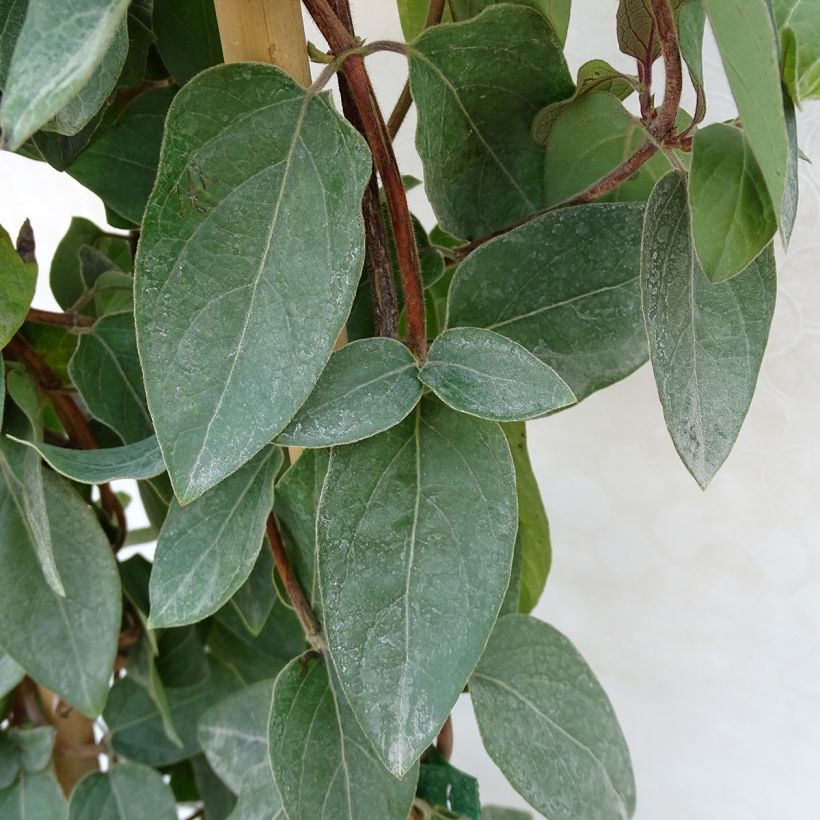

Plant habit
Flowering
Foliage
Botanical data
Lonicera
japonica
Pink Aperitif
Caprifoliaceae
Japanese Honeysuckle, Golden-and-silver Honeysuckle, Chinese Honeysuckle
Cultivar or hybrid
Other Honeysuckle
View all →Planting and care
The Japanese honeysuckle 'Pink Aperitif' thrives in good deep garden soil, preferably rich and moist. If the substrate tends to dry out, consider watering in the early summers or placing the plant in the shade. Mulch if necessary.
Prefer a sunny exposure to promote flowering, but not scorching. A semi-shaded situation will also suit it, especially if the sun is intense in your region.
Practice a cleaning pruning every year if you wish to maintain an orderly shape. Do this in early winter to not compromise flowering, which occurs on the wood of the year. However, it is possible to severely cut back an older subject to completely renew the framework when it forms a thick bun consisting partly of dead wood. This restoration will be done over one or two years.
Honeysuckles are hardy climbing plants ideal for quickly dressing up a wall or pergola. Provide them with support, and they will attach themselves. We love them for their long flowering period and wonderful fragrance. Our tip: Plant them near your patio to fully enjoy their intoxicating scent, which intensifies in the morning and evening.
.
Planting period
Intended location
Care
-
, onOrder confirmed
Reply from on Promesse de fleurs
Similar products
Haven't found what you were looking for?
Hardiness is the lowest winter temperature a plant can endure without suffering serious damage or even dying. However, hardiness is affected by location (a sheltered area, such as a patio), protection (winter cover) and soil type (hardiness is improved by well-drained soil).

Photo Sharing Terms & Conditions
In order to encourage gardeners to interact and share their experiences, Promesse de fleurs offers various media enabling content to be uploaded onto its Site - in particular via the ‘Photo sharing’ module.
The User agrees to refrain from:
- Posting any content that is illegal, prejudicial, insulting, racist, inciteful to hatred, revisionist, contrary to public decency, that infringes on privacy or on the privacy rights of third parties, in particular the publicity rights of persons and goods, intellectual property rights, or the right to privacy.
- Submitting content on behalf of a third party;
- Impersonate the identity of a third party and/or publish any personal information about a third party;
In general, the User undertakes to refrain from any unethical behaviour.
All Content (in particular text, comments, files, images, photos, videos, creative works, etc.), which may be subject to property or intellectual property rights, image or other private rights, shall remain the property of the User, subject to the limited rights granted by the terms of the licence granted by Promesse de fleurs as stated below. Users are at liberty to publish or not to publish such Content on the Site, notably via the ‘Photo Sharing’ facility, and accept that this Content shall be made public and freely accessible, notably on the Internet.
Users further acknowledge, undertake to have ,and guarantee that they hold all necessary rights and permissions to publish such material on the Site, in particular with regard to the legislation in force pertaining to any privacy, property, intellectual property, image, or contractual rights, or rights of any other nature. By publishing such Content on the Site, Users acknowledge accepting full liability as publishers of the Content within the meaning of the law, and grant Promesse de fleurs, free of charge, an inclusive, worldwide licence for the said Content for the entire duration of its publication, including all reproduction, representation, up/downloading, displaying, performing, transmission, and storage rights.
Users also grant permission for their name to be linked to the Content and accept that this link may not always be made available.
By engaging in posting material, Users consent to their Content becoming automatically accessible on the Internet, in particular on other sites and/or blogs and/or web pages of the Promesse de fleurs site, including in particular social pages and the Promesse de fleurs catalogue.
Users may secure the removal of entrusted content free of charge by issuing a simple request via our contact form.
The flowering period indicated on our website applies to countries and regions located in USDA zone 8 (France, the United Kingdom, Ireland, the Netherlands, etc.)
It will vary according to where you live:
- In zones 9 to 10 (Italy, Spain, Greece, etc.), flowering will occur about 2 to 4 weeks earlier.
- In zones 6 to 7 (Germany, Poland, Slovenia, and lower mountainous regions), flowering will be delayed by 2 to 3 weeks.
- In zone 5 (Central Europe, Scandinavia), blooming will be delayed by 3 to 5 weeks.
In temperate climates, pruning of spring-flowering shrubs (forsythia, spireas, etc.) should be done just after flowering.
Pruning of summer-flowering shrubs (Indian Lilac, Perovskia, etc.) can be done in winter or spring.
In cold regions as well as with frost-sensitive plants, avoid pruning too early when severe frosts may still occur.
The planting period indicated on our website applies to countries and regions located in USDA zone 8 (France, United Kingdom, Ireland, Netherlands).
It will vary according to where you live:
- In Mediterranean zones (Marseille, Madrid, Milan, etc.), autumn and winter are the best planting periods.
- In continental zones (Strasbourg, Munich, Vienna, etc.), delay planting by 2 to 3 weeks in spring and bring it forward by 2 to 4 weeks in autumn.
- In mountainous regions (the Alps, Pyrenees, Carpathians, etc.), it is best to plant in late spring (May-June) or late summer (August-September).
The harvesting period indicated on our website applies to countries and regions in USDA zone 8 (France, England, Ireland, the Netherlands).
In colder areas (Scandinavia, Poland, Austria...) fruit and vegetable harvests are likely to be delayed by 3-4 weeks.
In warmer areas (Italy, Spain, Greece, etc.), harvesting will probably take place earlier, depending on weather conditions.
The sowing periods indicated on our website apply to countries and regions within USDA Zone 8 (France, UK, Ireland, Netherlands).
In colder areas (Scandinavia, Poland, Austria...), delay any outdoor sowing by 3-4 weeks, or sow under glass.
In warmer climes (Italy, Spain, Greece, etc.), bring outdoor sowing forward by a few weeks.






























